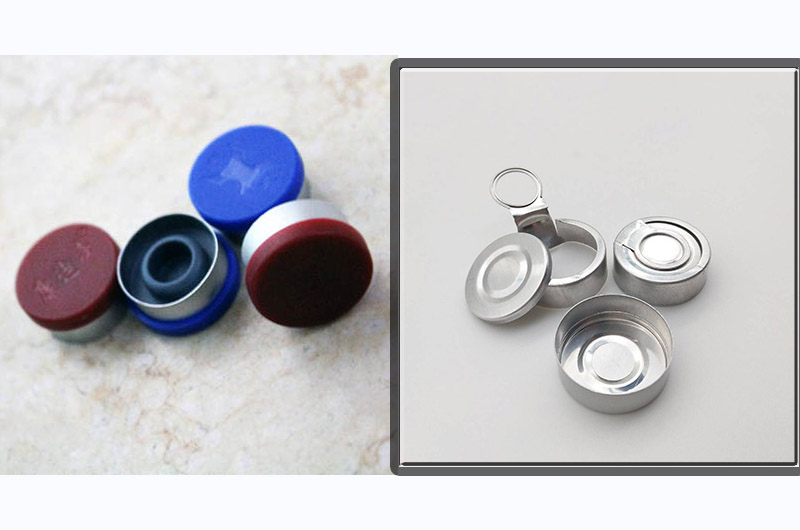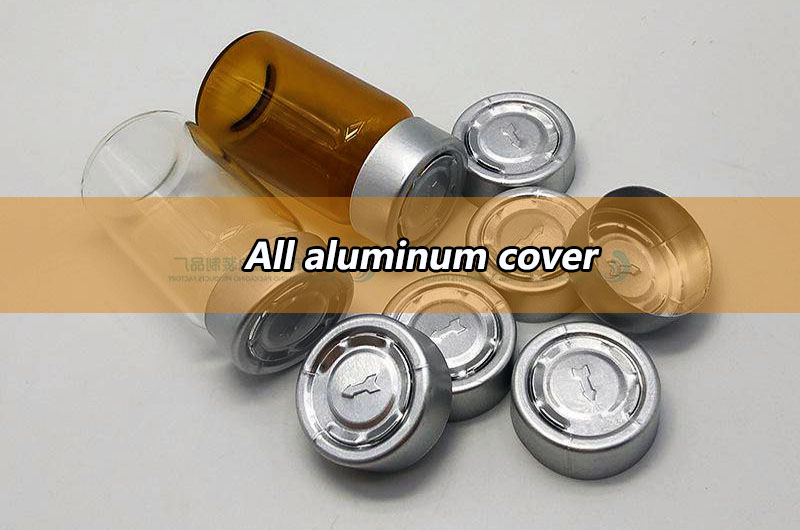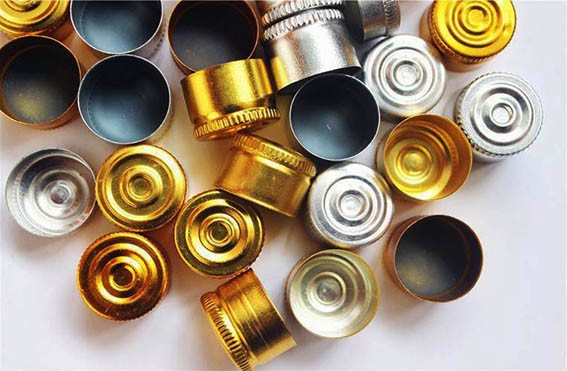Types and selections of aluminum cap packaging for injections
Last Updated :Apr. 10, 2024
Aluminum caps play a vital role in injectable product packaging systems as auxiliary packaging components. Although not in direct contact with pharmaceuticals, they play an important role in maintaining safe sterility and preventing tampering.

The function of aluminum caps in pharmaceutical injection packaging
1. Secure the stopper firmly to maintain the overall sterility of the packaging.
One of the key functions of aluminum caps is to hold bottle stoppers securely in place. This ensures that the contents of the vial remain sterile and free of contamination. Aluminum lids play a key role in maintaining the overall sterility of packaging by creating a barrier between the external environment and sterile contents.
2. Protects the injection site on the rubber stopper while showing signs of tampering (depending on the aluminum cap design).
The aluminum cap also protects the injection site on the stopper, preventing tampering and ensuring product security. Depending on the design of the aluminum cap, it can provide a visual indication of tampering, such as a broken or altered seal, alerting consumers and healthcare professionals of potential product tampering.
Pharmaceutical Injection Aluminum Cap Ingredient Specifications
Injectable aluminum caps are typically made from aluminum alloys that are specifically selected for their mechanical properties, corrosion resistance, and suitability for pharmaceutical applications. Common aluminum alloys used in pharmaceutical packaging include 8011 and 3105, which offer a balance of strength, formability and compatibility with sterilization processes.
The service temperature of aluminum caps varies depending on the specific application and processing requirements. Aluminum alloys have relatively low melting points, with typical melting temperatures for commonly used alloys such as 8011 ranging from 600°C to 660°C (1112°F to 1220°F). However, in the pharmaceutical packaging world, aluminum lids are typically used at ambient temperatures because they are not affected by extreme heat during normal handling and storage.
Aluminum cap specifications include size, thickness and surface finish, and are customized to meet the requirements of specific pharmaceutical products and packaging systems. Aluminum caps are available in a variety of sizes and configurations to suit the different types of vials and bottles used in pharmaceutical packaging. The thickness of aluminum covers typically ranges from 0.15 mm to 0.25 mm, depending on the application and the level of protection required. Surface treatments may include plain, painted, or printed designs, depending on aesthetic preferences and functional requirements.
Classification of pharmaceutical injection aluminum caps
Aluminum lids used in pharmaceutical packaging are classified based on their structure, design and tamper-evident function
All aluminum cover
Although the cost of all-aluminum aluminum covers (such as flip-up aluminum covers and tear-off aluminum covers) is lower than that of aluminum-plastic combination covers, such aluminum covers require both hands to open, and there is a risk of injury due to sharp edges, and It is almost impossible to show traces of tampering, so it is commonly used in veterinary drugs and diagnostic drugs.

Aluminum plastic combination cover
The aluminum-plastic combination cover can be opened with one hand. Different colored plastic caps allow for quick identification of medicines and differentiation from other products on the market. These plastic covers are tamper-proof (the principle is that once the plastic cover is lifted, it cannot be reattached properly). This ensures the safety and integrity of the product, making it suitable for use in human pharmaceuticals and professional medical products where tamper resistance is critical.

Injection aluminum cap manufacturing process
The manufacturing process of aluminum covers includes several steps such as extrusion, cutting and shaping, and surface treatment:
1. squeeze
The process begins by extruding an aluminum alloy blank through a die to form the lid into the desired shape and profile. Extrusion can create complex designs and configurations while maintaining the mechanical properties of aluminum alloys.
2. Cutting and shaping
After extrusion is complete, the aluminum profile is cut and formed to the specified size using precision machining techniques such as stamping or punching. This step ensures that the cap meets the required tolerances and fits snugly onto the corresponding vial or bottle.
3. Surface treatment
After forming, the aluminum cover can undergo a surface treatment process to enhance its functionality and aesthetics. Common surface treatments include anodizing, which increases corrosion resistance and provides a protective layer on the aluminum surface, and coating or printing, which can apply logos, text, or decorative finishes.



